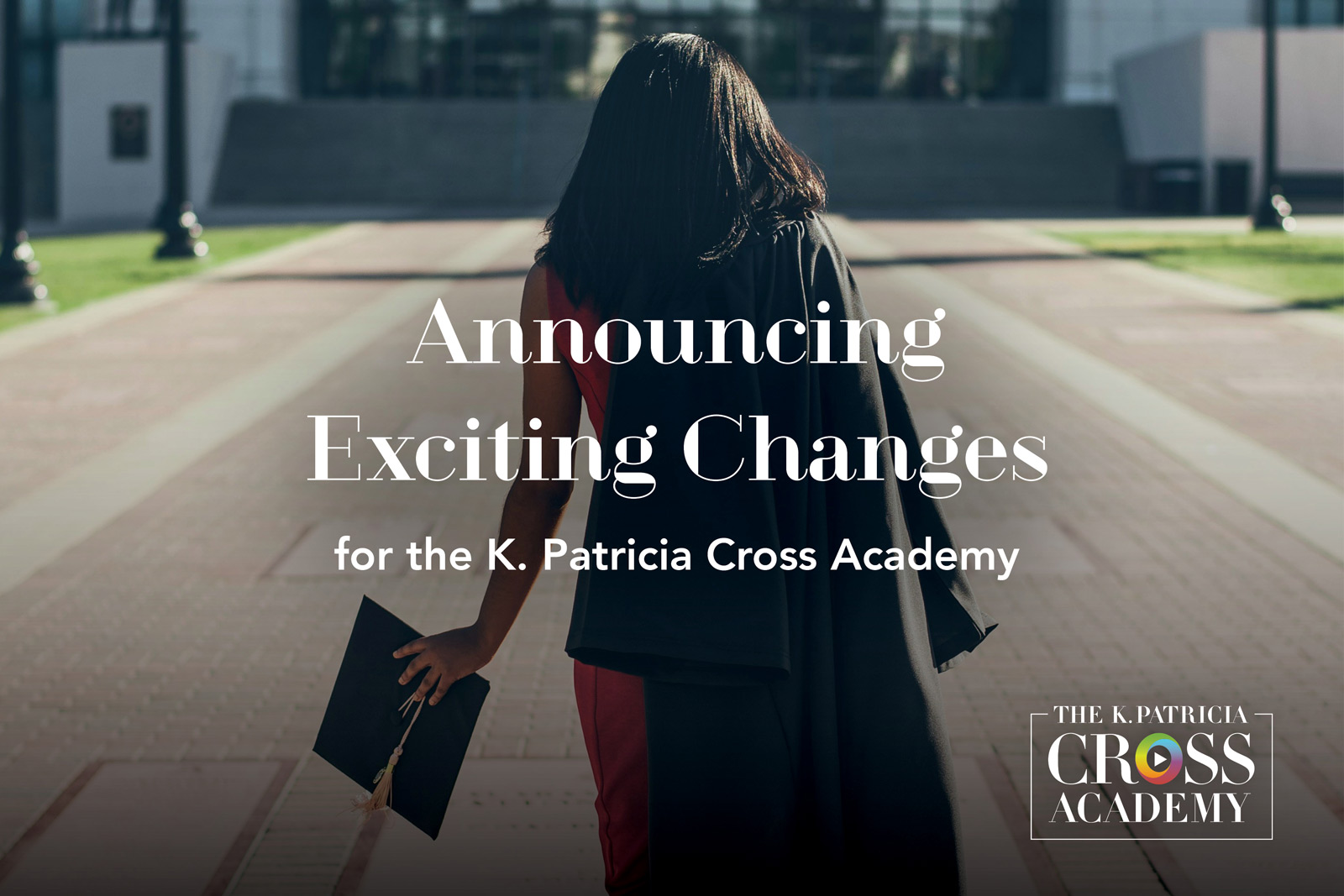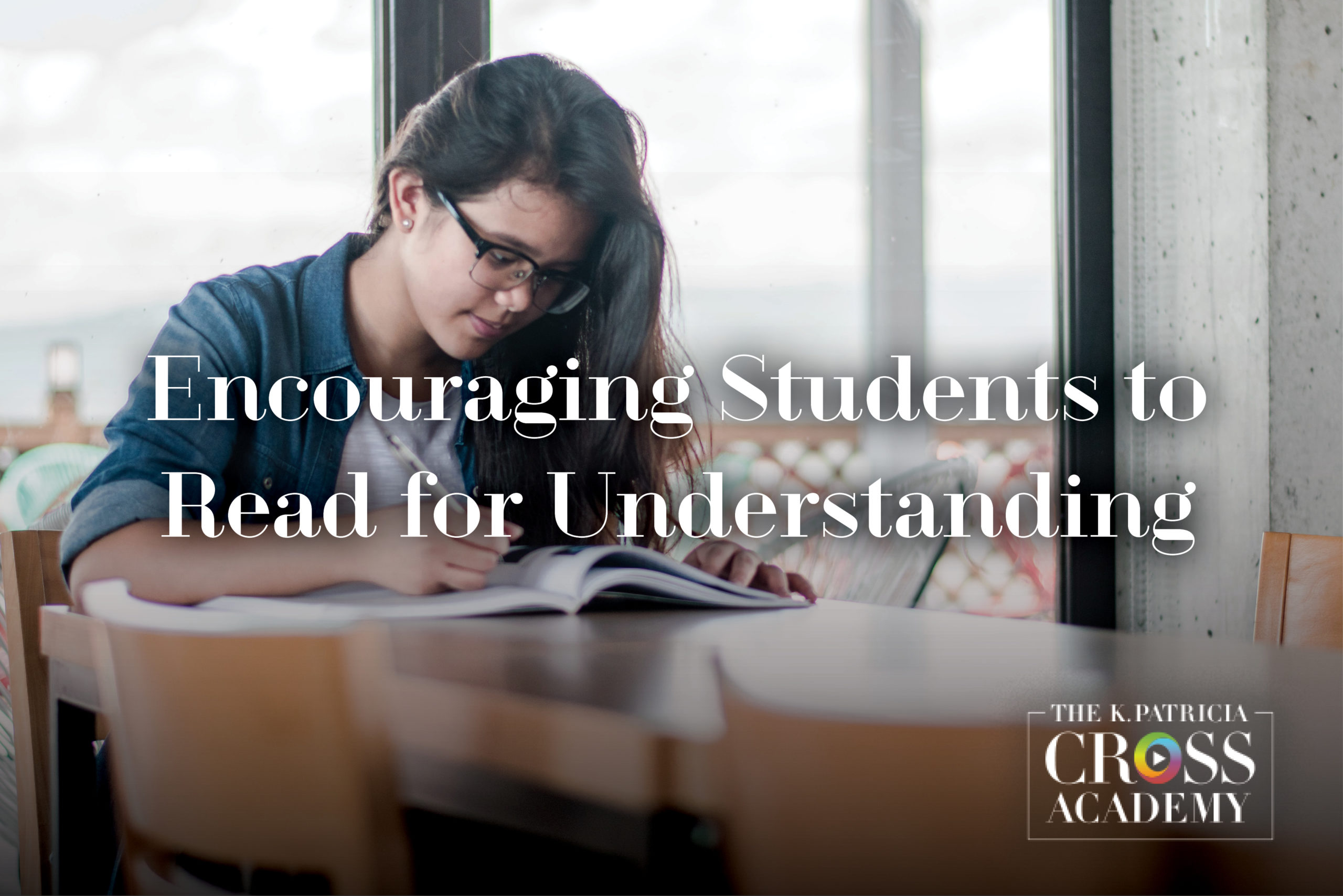
Reading is a fundamental skill that many of us take for granted, particularly in academia, yet it is essential to student success in and out of the classroom. However, as Thorndike wrote in 1917, reading can be as complex as solving a complex equation:
Understanding a paragraph is like solving a problem in mathematics. It consists of selecting the right elements of the situation and putting them together in the right relations, and also with the right amount of weight or influence or force for each. The mind is assailed as it were by every word in the paragraph. It must select, repress, soften, emphasize, correlate and organize, all under the influence of the right mental set or purpose or demand. (p. 329)
Students should be able to read fluently by the time they enter college, no matter their field of study. Students who are skilled readers are able to recognize, process, and understand text effortlessly.
We tend to expect students to have a wide range of well-developed reading skills from the moment they set foot on campus (ACT, 2019). In reality, however, incoming students have varying levels of reading aptitude and ability. While some students leave high school with established skills and strategies to assess the relevance of assigned readings to their own education, others are not yet prepared for college-level reading. Some students struggle to read actively, particularly in today’s climate, unable to focus on assignments or retain the information. These students will most likely not be as successful as learners if they are not prepared to approach reading effectively and efficiently.
The right reading strategy can help a student (or an educator) establish goals and objectives for an assignment, leading to deeper learning. For instance, depending on expectations and needs, a good reader may:
- Skim a text to understand its general ideas
- Scan for specific points and information
- Read closely to understand the nuances and deeper meanings of the material
Each of these aspects of reading is important, and in an ideal world, students would have time and skill to do all three: skim the material to understand its broad points, scan to determine patterns and key ideas, and then do a close reading to more thoroughly understand the subject. A working knowledge of reading strategies can help students determine how to approach a reading assignment and clarify their goals for the material. Instructors can help students develop knowledge of effective reading strategies by describing and demonstrating them.

Another way to help students improve reading is to offer a specific, clear structure to complete necessary tasks. The more students understand the structure of their approach, the more likely they’ll develop their own strategic behavior. This also can reduce cognitive overload, particularly when it comes to dense texts, and it provides students with clear goals for complex assignments (Ambrose et al., 2010; Clarke et al, 2005; Dubas & Toledo, 2015). Students with strong reading skills may already have their own structure and strategies, but Dowhower (2009) suggests that teachers can help those with weaker reading comprehension abilities by offering specific structures, which can include tasks to complete during a reading. Providing that structure helps students with lower reading skills close the gap with skilled readers and also can help skilled readers better understand the tools at their disposal.
Approaching reading with a clear strategy may also improve students’ overall attitudes about the assignment. Some non-skilled readers can get bogged down with anxiety and discomfort when approaching a dense text without the skills to understand it. Teachers can ease that burden of learned helplessness (Dubas & Toledo, 2015) by offering specific and clear goals that improve expectations that they will be able to finish an assignment (Ambrose et al., 2010). Additionally, specific recommendations convey the idea that teachers value the subject, potentially leading to students recognizing the importance of the reading.

Research on Reading Strategies that Improve Student Learning
Research examining the implementation of specific reading strategies helps us determine what types of assignments will see the greatest benefit to students. There are a number of key points to consider from existing studies:
1. Guided reading promotes deeper learning
Providing students with a reading guide, often consisting of questions for students to answer using the text, appears to improve student learning. Such questions can vary in complexity, from fill-in-the-blank style assignments to higher-order prompts that foster critical thinking skills. Dubas and Toledo (2015) describe their method for keeping students engaged with reading assignments, in their report on the effect of Active Reading Documents (ARD), saying that their guided reading documents have led to improved student learning and more productive class periods.
2. Summarizing/annotating information improves learning
Studies indicate that teachers can improve student learning by providing annotated texts that include explanations for key topics, which can be printed directly on the text either online or on paper copies. For instance, Huang (2014) researched the influence on summary writings and annotations on 100 Taiwanese EFL students’ reading comprehension and found that both annotations and summary writings improved student performance. Likewise, Tseng et al. (2014) determined that online annotations improved learning results among fifty EFL students. Marking text information and including summary notes was the most effective, according to their findings. Carlston (2011) described the positive effects of the Survey-Question-Read-Recite-Review (SQ3R) method for analyzing course texts. Carlston asked students to summarize their understanding by completing note documents. Students retained more information and scored higher on tests and exams when they used the SQ3R approach, findings indicated.
3. Question-answer tasks improve learning
There are various types of question-and-answer assignments, and researchers have drawn some compelling conclusions about each of them. Cerdan et al. (2009) examined whether high-level or low-level question-answer tasks had a greater effect on student learning in a study of 37 undergraduates. The participating students were asked to read an assignment and answer questions on a computer screen. Half of the participants read the text before answering the questions, and the other half of students answered the questions without reading the text. Both groups were able to search the text for answers. High-level questions fostered deeper comprehension, findings indicated, even if there was not an immediate effect on student recall.
Weinstein et al. (2010) examined whether questions self-generated by students could improve memory. They conducted three experiments during which participating students were asked to read the same passage, answer a set of questions, and then complete a book test. Then, students read three passages of 350-575 words before being divided into three groups and completing one of three tasks: rereading the passages, answering a question created by the research team, or developing and answering their own questions. The team found that questions, both self-generated and given by the experimenter, were more effective tools than rereading. However, student-generated questions took twice the amount of time as the other methods and, thus, were a less effective use of time than experimenter-generated questions, which had a similar effect.
However, other researchers have found that student-generated questions can have a positive effect on learning. For instance, Bugg (2012) studied the effect of student-generated questions as compared to pre-reading an assignment. Students were told how to develop their questions. Bugg found that students who developed and answered their own conceptual questions had a positive boost to their memory of the material, but not students who developed detailed questions, which had no overall benefit.
4. Tying material to the reader experience improves learning, according to students
Ukpokodu (2010) studied what specific pedagogies were found to be effective among online students participating in a teacher-education program. Students said writing response papers to assigned readings and relating them to their own experiences was the most effective assignment improving their own learning.
Cross Academy Techniques (CATs) for Improving Student Reading
To implement these research-based strategies for reading in your own classroom, refer to the following Cross Academy Teaching Techniques:
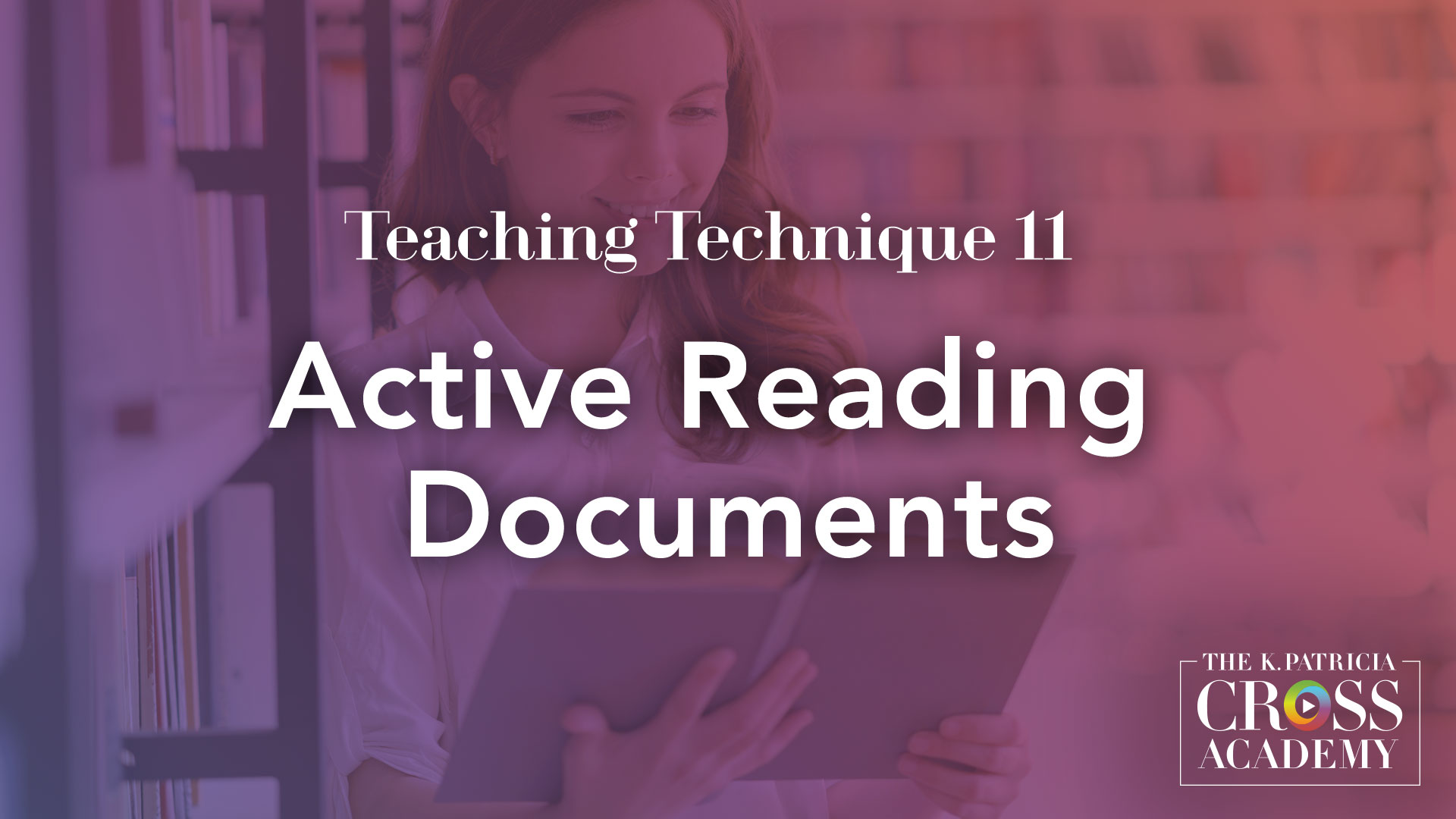
Active Reading Documents (ARDs)
These carefully designed forms guide students through their assignments, encouraging critical and careful reading skills.
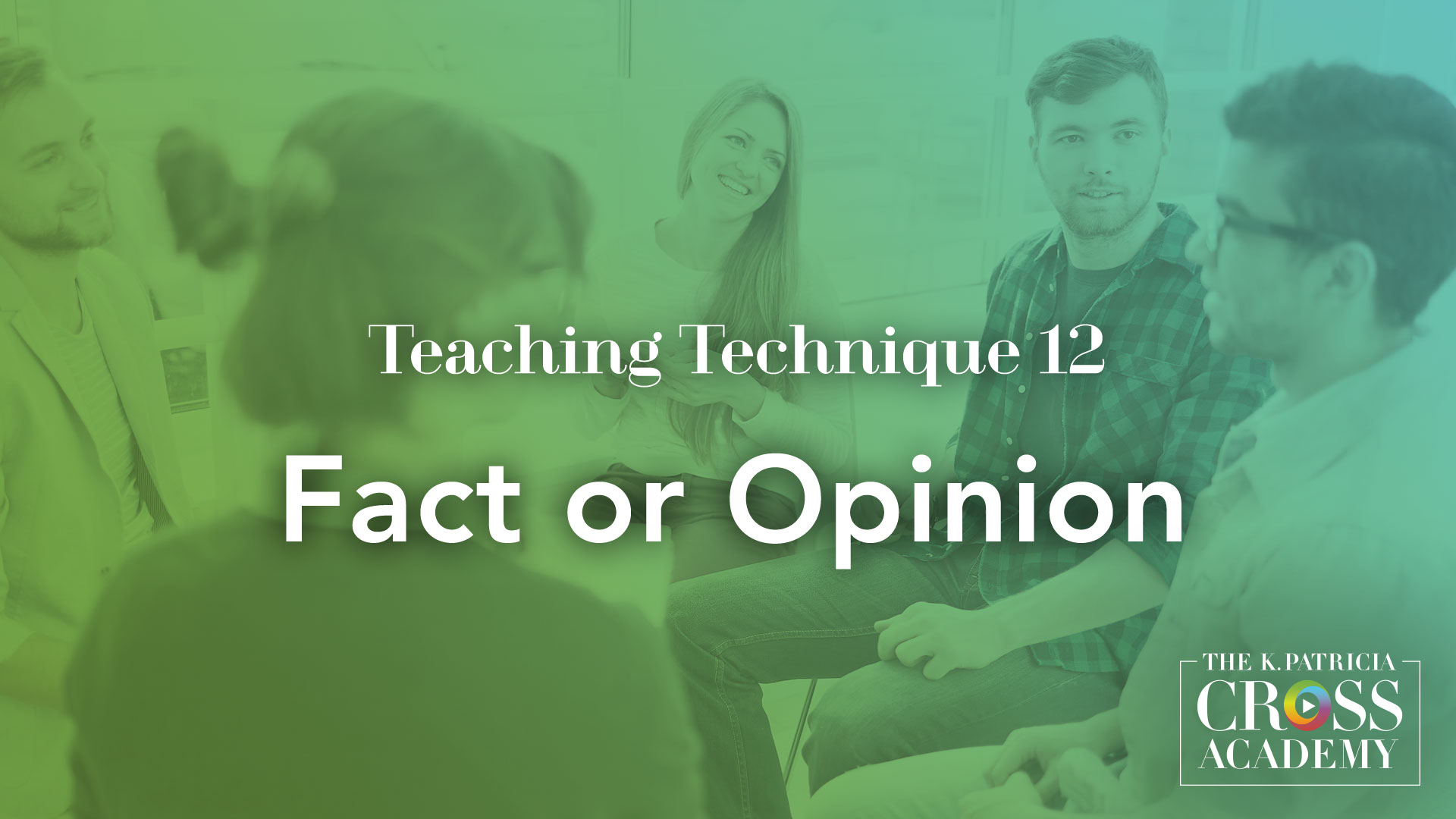
Fact or Opinion
This method helps students critically evaluate the material in their assignments.
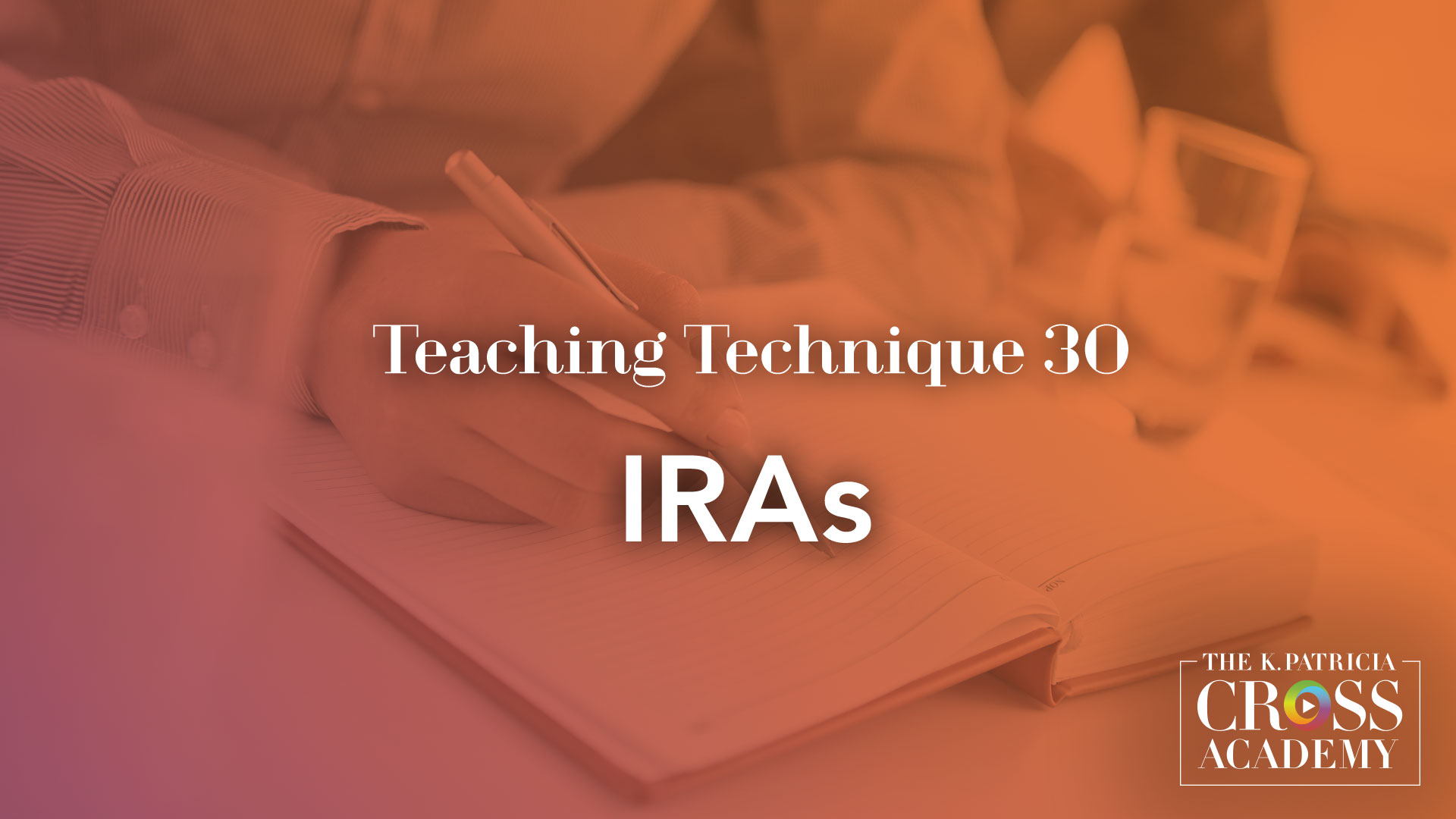
IRAs
Students complete a reading assignment and then fill out a form which includes their: 1) Insights, 2) Resources, and 3) Application.
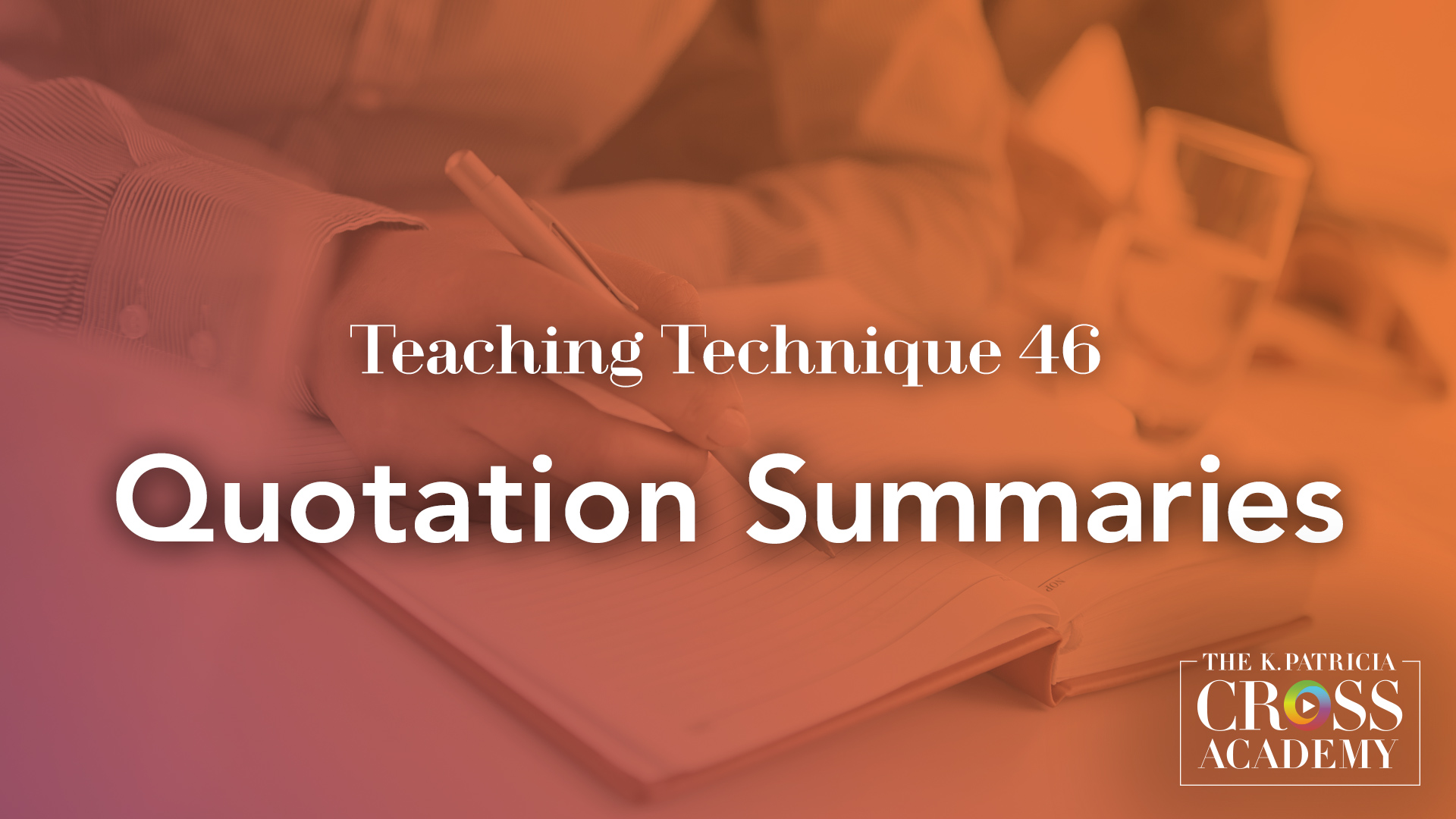
Quotation Summaries
Students respond to quotes pulled from an assigned reading in a series of structured assignments: paraphrasing, interpretation, commentary, and citation.
References
ACT. (2019). Condition of college and career readiness. Retrieved from https://www.act.org/content/act/en/research/
Ambrose, S. A., Bridges, M. W., DiPietro, M., Lovett, M. C., & Norman, M. K. (2010). How learning works: Seven research-based principles for smart teaching. San Francisco, CA: Jossey-Bass.
Bugg, J. M., & McDaniel, M. A. (2012). Selective benefits of question self-generation and answering for remembering expository text. Journal of Education Psychology, 104(4), 922–931.
Carlston, D. (2011). Benefits of student generated note packets: A preliminary investigation of SQ3R implementation. Teaching of Psychology, 38(3), 142-146.
Cerdan, R., Vidal-Abarca, E., Martinez, T., Gilabert, R., & Gil, L. (2009). Impact of question–answering tasks on search processes and reading comprehension. Learning and Instruction, 19(1), 13–27.
Clarke, T. A., Ayres, P. L., & Sweller, J. (2005). The impact of sequencing and prior knowledge on learning mathematics through spreadsheet applications. Educational Technology Research and Development, 53, 15–24.
Dowhower, S. L. (2009). Strategic stance in the classroom: A comprehension framework for helping teachers help students to be strategic. The Reading Teacher, 52, 672–688.
Dubas, J. M., & Toledo, S. A. (2015). Active reading documents: A tool to facilitate meaning learning through reading. College Teaching, 63(1), 27–33.
Huang, W. C. (2014). The effects of multimedia annotation and summary writing on Taiwanese EFL students’ reading comprehension matrix. An International Online Journal, 14(1), 136–153.
Thorndike, E. L. (1917). Reading as reasoning: A study of mistakes in paragraph reading. Journal of Educational Psychology, 8, 323-332.
Tseng, S. & Yeh, H. & Yang, S. (2014). Promoting different reading comprehension levels through online annotations. Computer Assisted Language Learning, 28, 41-57.
Ukpokodu, O. N. (2010). Teachers’ reflections on pedagogies that enhance learning in an online course on teaching for equity and social justice. Journal of Interactive Online Learning, 9(3), 227–255.
Weinstein, Y., McDermott, K. B., & Roediger, H. L. (2010). A comparison of study strategies for passages: Rereading, answering questions, and generating questions. Journal of Experiential Psychology, 16(3), 308–316.
Suggested Citation
Barkley, E. F., & Major, C. H. (n.d.). Encouraging students to read for understanding. CrossCurrents. https://kpcrossacademy.org/encouraging-students-to-read-for-understanding/

Engaged Teaching
A Handbook for College Faculty
Available now, Engaged Teaching: A Handbook for College Faculty provides college faculty with a dynamic model of what it means to be an engaged teacher and offers practical strategies and techniques for putting the model into practice.
